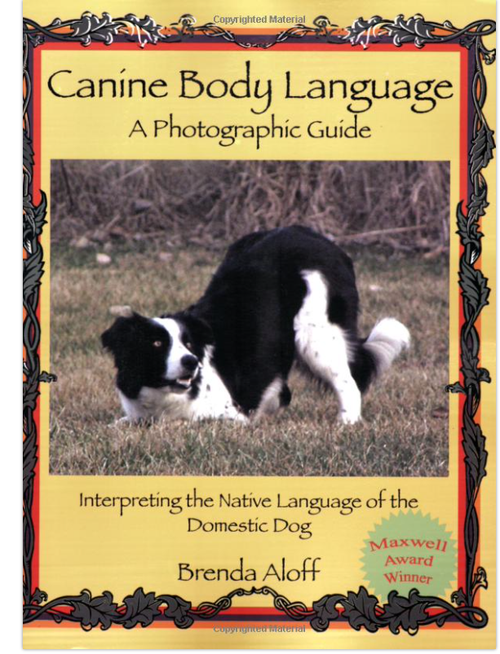
General Resources
Why should I use Positive Reinforcement Training with my dog?
Living with and teaching our dogs with a positive reinforcement based mindset focuses on the idea that teaching and learning should be fun, all participants should be willing and methods should be safe and harm free.
This centers the ideals that we are teaching our dogs what we want them TO DO by addressing the root causes of behavior challenges first. Often starting with management of environments to prevent undesirable behaviors from being practiced while determining best next steps and exploring the dog’s needs. Always recognizing that behavior has a function rooted in emotional and/or physical needs. We do not rely on pain, intimidation or coercion to suppress problem behaviors.
All dogs, regardless of size, breed, age or previous history will learn using the same principals and no dog needs a heavy hand (punishment) to learn.
How to choose a Trainer
Choosing a dog trainer can be one of the most important decisions that you make in your dog’s life. The techniques that a trainer uses can strongly affect how you interact with your dog for years to come. Don’t let high social media followers or flashy content fool you into making a mistake with a trainer who may ask you to do things you may not be comfortable with.
AVSAB endorses training methods which allow animals to work for things (e.g., food, play, affection) that motivate them rather than techniques that focus on using fear or pain to punish them for undesirable behavior
Read the “American Veterinary Society of Animal Behavior” Position Statement on Choosing a Trainer
Read my article on Kinship.com: How to Find a Qualified Dog Trainer
Humane Dog Training Position Statement
Based on current scientific evidence, AVSAB recommends that only reward-based training methods are used for all dog training, including the treatment of behavior problems. Reward-based techniques should be used for teaching common training skills as well as to address unwanted behaviors. The application of aversive methods –which, by definition, rely on application of force, pain, or emotional or physical discomfort – should not be used in canine training or for the treatment of behavioral disorders….. (Read More Below)
“American Veterinary Society of Animal Behavior” Position Statement on Humane Dog Training
Recommended Reading
Understanding canine communication is vital for fostering a strong bond and providing optimal care. By learning to "speak dog," we delve into their rich emotional world and enhance our relationship. It's essential for safe play, preventing misunderstandings, and improving training outcomes as well as improving our relationships with our dogs. When we center two way communication and understanding vs control we can begin to live rich and meaningful lives with our dogs.
Puppy Start Right: Foundation Training for the Companion Dog
By Kennith M Martin, Debbie Martin
Canine Body Language: A Photographic Guide
By Brenda Aloff
Canine Enrichment fir the Real World: Making it a Part of Your Dog’s Daily Life
By Allie Bender & Emily Strong
By Jean Donaldson
By Karen Pryor
“Meeting all of an animals needs as closely as possible to how they would be met in the wild, in order to empower them to engage in species-typical behaviors in healthy and appropriate ways”
The average pet guardian hears “enrichment” and likely thinks of pretty stuffed food toys or puzzles, and while those can be great options - there is so much more to enriching a dogs life and you shouldn’t be held back! Enrichment is often less about the “what” of the activity but more about the outcome. What is the end goal? To ease boredom? Help build confidence in a new space? Aid in relaxation before or after a stressful event? Assist in learning? Once we define the goal we can understand if our enrichment was beneficial to the animal and adjust accordingly.
See my Blog Posts: Enrichment. Is it really that easy? for more details on what defines enrichment and this post indoor enrichment ideas.
Enrichment - a hot topic - a “buzzword” - but what is enrichment? Allie Bender and Emily Strong authors of Canine Enrichment for the Real World, Making it a Part of your Dog’s Daily Life define enrichment as…
Enrichment Ideas for your Dog!
-
Chewing / Shredding / Destroying are natural and instinctual behaviors for dogs. Providing appropriate outlets is the best way to ensure your dog makes the best choices and doesn’t resort to your furniture.
Chews:
All dogs are different and have different wants and needs - always supervise when introducing new chews
Bully Sticks
Trachea
Backstrap
Raw Bones
Different textures and flavors interest different dogs at different times
Some dogs want to chew and destroy soft toys, rubber, squeakers etc. - as long as they aren’t being ingested, it should be ok!
Shredding / Ripping:
Toys, paper, cardboard, anything in the recycling!
Save your empty toilet paper rolls, paper towel rolls, packing paper, egg cartons and more! Create enrichment boxes with food, paper, cardboard and let your dog go nuts
See video here: https://youtu.be/_t8XUMKRpLk
-
The opportunities are literally endless
Long sniffy walk: Dog on a long leash and non restrictive harness. Allow your dog to lead the walk (safely), stop as often as they want to smell, let their nose lead the way! Don’t rush. Enjoy the time.
Nose Work Games: Nosework is an activity that allows your dog to use their natural desire to hunt. It harnesses a dog's unique ability to detect scent and determine the source
See Video for beginner games:
https://youtu.be/nJB-cDwwXvEhttps://k9nosework.com - A wonderful activity for dogs of all ages, anxious dogs, dogs who are injured etc..
Treat Scatters: Scatter food / treats in your yard for your dog to sniff out - if your just starting use a small area to ensure success
Allow your dog examine new things in your home, packages, mail, new clothes, anything they seem interested in smelling!
-
Many dogs need to dig. The more we lean against it and try to prevent it, the more likely our dogs will be to find a place to dig. Instead of fighting it, I recommend providing a safe digging outlet. This might be a digging box outside such as an old garden bed, or a kiddie pool filled with sand or dirt. Fill with your dogs favorite toys and maybe bury a few snacks to encourage them to dig and find.
They may still make errors and dig in the “wrong” place - if this happens, gently lead them to the digging spot and encourage them to dig there. You can even put it on cue!
A digging pit inside can be a kiddie pool with balls, a dog bed they enjoy burrowing into or something with holes you hide things inside of. Get creative! Just encourage and reinforce the natural behaviors when they occur under conditions you want to replicate.
-
While it may seem like a leashed walk through the neighborhood tires your dog out, it typically does not (for the average dog). Especially if we are rushing our dogs away from interesting smells or they are experiencing stressful events like dogs barking behind fences or from across the street on leash. This may cause a type of tired we don’t want - stress, like after a hard day at work. Some other options are
o Take your dog for long walks or hikes or to run off leash (sniffspot.com)
o Go swimming (there are apps to rent pools these days!).
o Games like tug, flirt poles, chase.
o Dog sports such as Agility, Flyball, Dog diving and more.
-
o Hide treats around the house for your dog to find.
o Give your dog a food puzzle to solve.
o Play scent work games.
o Teach your dog a new trick or join a positive reinforcement training class.
o Take your dog to a new place to explore.
-
• West Paw Toppl- Great for puppies, can be made more challenging as they grow
• Outward Hound / Nina Ottosson Puzzles – Often require supervision
• Snuffle Mats – Hide kibble or treats in this “toy” that encourages your dog to use their nose to sniff them out! Tap into a dogs’ instinctual need to forage. Good for dogs of all sizes and ages.
• Licki Mat / Bowl – Licking is innate and relaxing for many dogs. The Licki products can provide great texture options for wet and frozen options!
• Kong Wobbler- Kong shaped toy and feeder that stands up until your dog tips it over with their paws or nose dispensing what’s inside. Can be challenging for puppies, but also helps to develop coordination. ** Good for super chewers**
• Tricky Treat Ball: Challenging interactive ball will entertain for hours!
• Planet Dog Orbee Snoop: Interactive toy that will keep dogs going and guessing! Not appropriate for aggressive chewers. Great for small dogs & puppies!
-
Items to collect:
Paper Towel / Toilet Paper Rolls Milk Cartons
Packing Paper
Socks – T-Shirts – Towels
Cardboard Boxes
Egg Cartons
Plastic Bottles of various sixes Muffin Tins
• Paper Towel / TP Roll: Close one end by folding it over - toss a few pieces of food inside and fold the other end over so both sides are closed lightly. Give to your dog and encourage them to find a way to open to find the food!
**Trainer Tip – The goal is for the game to be satisfying not too challenging. If your dog gives up or gets frustrated, make the game easier! It’s ok if they finish in 2 minutes. Remember it’s about the outcome nit how long it took to complete.
Packing Paper: Roll food into “paper presents” allow dog to shred paper to find food surprise
• For extra foraging - place paper presents into cardboard box while your dog is out of the room and let them in to find it!
• Extra challenge - close box and watch them figure out the puzzle!
• Tip - increase challenge as your dog is successful - too much too soon can cause frustration and that’s no fun!
• Place kibble/treats into plastic bottles and encourage your dog to use their paws/nose to get out.
**Tip if this is difficult for your dog, cut a hole into the side of the bottle or use a bottle with a large opening like Gatorade.
• Take your dog into the yard and toss some food into the grass - homemade snuffle mat!
A Canine Affinity Faves
Showing some love for some of our favorite pet related small businesses
Sniffspot: Private Dog Park Rentals! Perfect for reactive, sensitive, anxious pups to get the space, decompression, play time they need without worry! Set up a play date, search for a spot with all of the amenities you need. Use the link below for $5 off your first visit.
For all of your R+ gear check out our friends at Woof Cultr!!!
Use code ACA15 for 15% off at checkout.
High Quality BioThane leashes, longlines, collars and other dog gear for trainers, dog walkers and dog lovers!
Women owned small business.
Veterinarian created supplements for dogs and cats made from high quality ingredients prioritizing sustainability and ethical practices.
Get 20% off your first order: This link
Lick-able treats for dogs! These super convenient, resealable pouches make training, walks, enrichment and more a great time
Extra 20% off with code Thankyou20 (must use this link) and code
*This is an affiliate link, I will earn a small commission with use.













